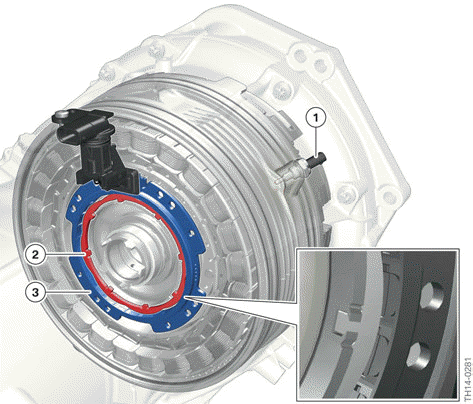BMW 3: Sensors

Sensors, electrical machine
- Temperature sensor
- Rotor of the rotor position sensor
- Stator of the rotor position sensor
So that the voltages for the coils in the stator can be correctly calculated and generated by the Electrical Machine Electronics in terms of amplitude and phase layer, the precise position of the rotor must be known. The rotor position sensor is responsible for this task. Its structure is similar to that of a synchronous machine and has a specially shaped rotor, which is connected to the rotor of the electrical machine, as well as a stator which is connected to the stator of the electrical machine.
The phase voltages induced by the rotation of the rotor in the coils of the stator are evaluated by the Electrical Machine Electronics and thus the rotor position angle is calculated.

After replacement of the automatic transmission or the Electrical Machine Electronics, the rotor position sensor must be adjusted with help of the diagnosis system.
The components of the electrical machine must not exceed a certain temperature during operation.
There is a temperature model and a temperature sensor for temperature monitoring of the electrical machine. This is designed as a variable resistor with negative temperature coefficient (NTC) and measures the output temperature of the transmission oil at the housing of the automatic transmission.
The hotter the NTC, the lower its resistance.
The Electrical Machine Electronics evaluates the signals of the temperature sensor, compares them with the calculated temperature model and reduces the power of the electrical machine if the temperature of the electrical machine approaches the maximum permissible value.
There is no longer a separate temperature sensor at one of the stator coils.

A replacement of the rotor position sensor is currently not permitted in the BMW Service workshop.

